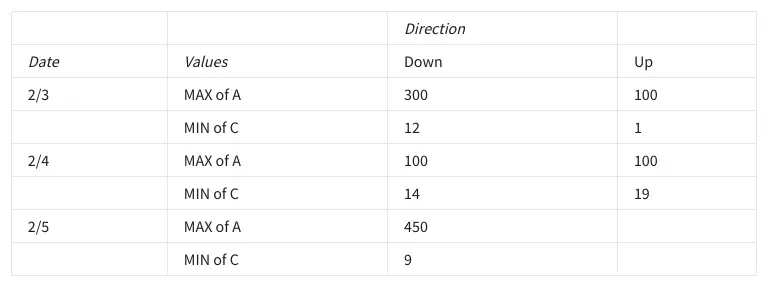11. You create a pivot table and want to add up the total of all cells for each row and column value in the pivot table. Which function in the values menu would you use to summarize the data?
- AVERAGE
- SUM
- PRODUCT
- COUNTA
13. In the following SQL query, which column is part of an addition operation that creates a new column?
SELECT
Yes_Responses,
No_Responses,
Total_Surveys,
Yes_Responses + No_Responses AS Responses_Per_Survey
FROM
Survey_1
- Total_Surveys
- Responses_Per_Survey
- Yes_Responses
- Survey_1
15. What is the purpose of using data validation during your analysis process?
- To ensure that you are able to use every piece of data from your raw data
- To guarantee that all of your stakeholders will be happy with your results
- To ensure that all data is complete, accurate, secure, and consistent
- To guarantee that visualizations are visually pleasing
16. What is the purpose of the <> operator in SQL?
- To add two values
- To return the remainder of a division operation
- To check if two values are not equal
- To set a value equal to another
17. What is a reason to use a temporary table instead of a standard table in SQL?
- A temporary table allows functions that are unavailable to standard tables.
- A temporary table calculates formulas using less memory than standard tables.
- A temporary table calculates formulas faster than standard tables.
- A temporary table allows analysts to repeatedly work with the same subset of data.
18. Which of the following SQL queries adds a table into the database?
- SELECT * FROM table GROUP BY columnA ORDER BY columnB;
- CREATE TABLE my_table AS (SELECT * FROM other_table);
- SELECT * FROM table;
- WITH my_table AS (SELECT * FROM other_table WHERE x = 0);
Shuffle Q/A 2
19. What is the purpose of using pivot tables?
- To multiply two arrays and add the results
- To allow quick copying from one table to another
- To view data in multiple ways to find insights and trends
- To allow the use of SQL in spreadsheets
20. How many different columns have been added to the values section of the pivot table editor?

- 3
- 2
- 6
- 1


